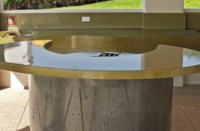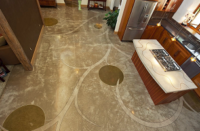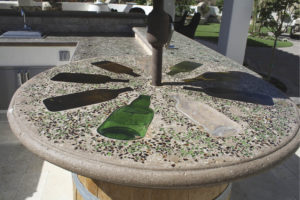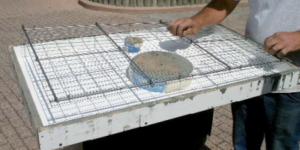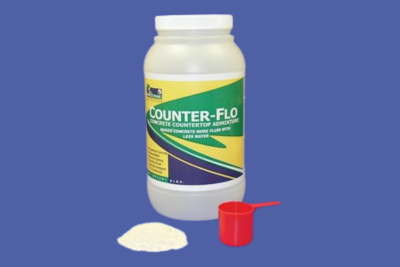 Concrete countertop makers are often in a bind when it comes to water content.
Concrete countertop makers are often in a bind when it comes to water content.
They want to use as little water as possible to maximize the strength of their countertops. On the other hand, they don’t want to struggle with molding a barely workable lump of concrete.
Counter-Flo Concrete Countertop Admixture, an admixture from Fritz-Pak Corp., is intended to solve that problem. It’s a water reducer designed for use when creating concrete countertops and statuary. It helps concrete maintain an adequate flow rate with less water, allowing a contractor to lower the amount added to a mix. Counter-Flo users will find their concrete has both flowability and strength.
The admixture consists of a proprietary blend of water reducers (also known as superplasticizers) and micronized calcium carbonate. It does not cause gelling like other water reducers, and it does not retard the setting time of concrete.
“You not only get higher-strength concrete, you also get more dense concrete that is less permeable,” says Fritz-Pak Corp. president Gabriel Ojeda.
Concrete with lower water content has higher compressive and structural strength, leading to faster demolding and a faster cure. Concrete that is drier at pour is also denser and less permeable, so it is less prone to staining. But concrete with Counter-Flo also has fewer air bubbles because of its relative wetness, so it offers better pattern definition.
On top of all that, Counter-Flo is colorless, so it can be used without fear of adding the slightest stray tint to a colored countertop.
Packaging options
Counter-Flo comes in an eight-pound resealable plastic container. The container yields about 66 scoops, enough to treat 1,320 pounds of cementitious materials. If a contractor mistakenly puts in too much, it won’t hurt the pour. “If you overdose, you will not get any negative effects,” says Ojeda. “We chose materials that will be a little more foolproof.”
Counter-Flo is added to dry concrete or mix materials before the resulting batch is mixed with water, about 20 percent less than usual. The admixture can help disperse a pigment within a mix if added before or at the same time as the colorant. It can also be sprinkled over wet concrete.
The additive is compatible with most concrete and cement admixtures, but testing is recommended prior to production use. It will gradually lose its effect within about 45 minutes of adding water, faster in warm climates. But if its effects wear off, fresh unplaced concrete can be redosed to regain flow properties.
For more information, visit the Fritz-Pak website or call (888) 746-4116.
